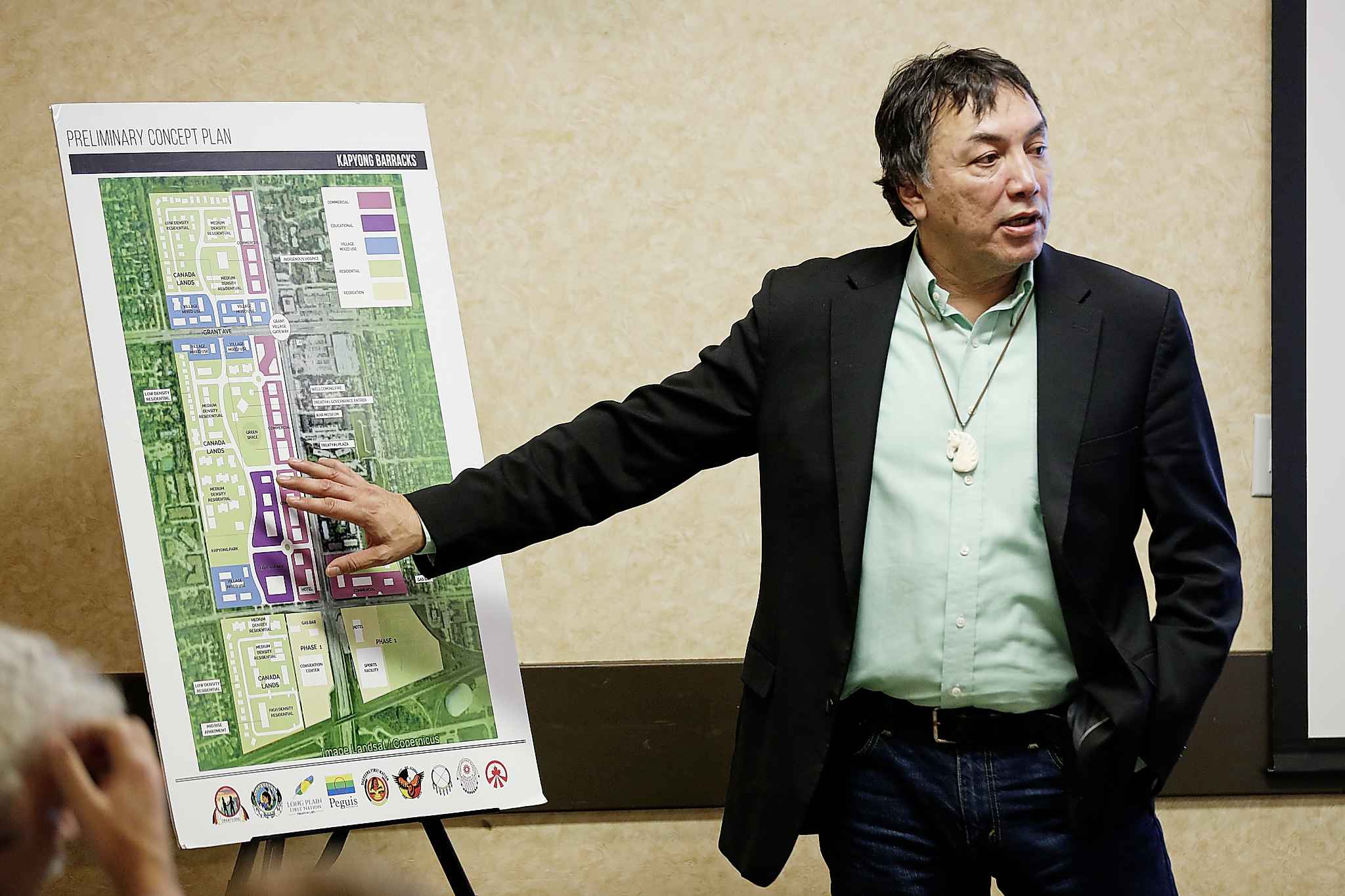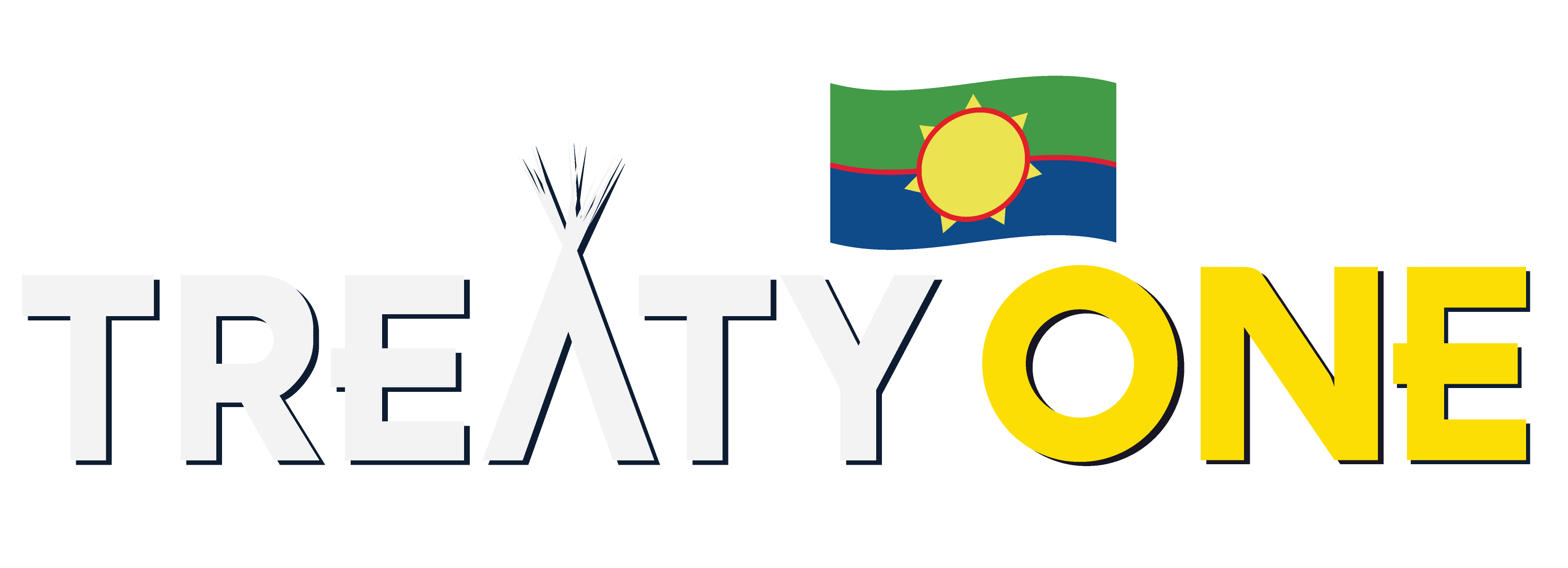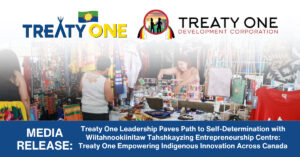No products in the cart.

Homes, Condos, Arena identified in the early stages of planning for Kapyong Barracks land
Initial plans for the development of the Treaty 1-owned portion of Kapyong Barracks include homes, condos and student and elder housing, as well as an Indigenous War Museum and arena with an NHL-sized rink.
The design and planning process officially began this week, with public consultation and the release of specific concepts expected to take place over the next few months.
In August, after 17 years of negotiations and legal battles, the seven Treaty 1 First Nations signed a settlement to purchase the land from the federal government, with intentions to convert it to an urban reserve.
Long Plain Chief Dennis Meeches, president of the Treaty One Development Corp., outlined the initial concepts to a group of non-profit housing professionals Monday afternoon.
Meeches, who called Kapyong “probably the most hotly-contested property in Western Canada,” told guests at the Manitoba Non-Profit Housing Association’s annual conference the parcel of land represented vast economic potential — an estimated $2 billion in investment, along with at least 2,000 jobs.
The room was mostly interested in the potential makeup for the development’s housing component. Housing, Meeches said, “makes or breaks” First Nations, and the development’s early-stage housing concepts would emphasize a mix of low- to medium-density residential space, comprising standalone homes, condos, as well as student and elder housing.
He said he wasn’t opposed to social housing, but Treaty 1 has not made a decision to build any on the urban reserve.
Other initial plans for the land include developing an Indigenous hospice, as well as the war museum. As well, the arena would feature a basketball court and an NHL-sized rink. Meeches hinted some big-box retail stores had expressed interest in developing on site, though he wouldn’t say which.
David Thomas, the corporation’s manager of planning and design, as well as an architect, said the residential and commercial space would echo that of the surrounding area.
The preliminary concepts were modelled off the existing properties that border the Kapyong parcel, of which Treaty 1 owns 110 acres. The remainder is owned by Canada Lands, the Crown corporation specializing in real estate development.
With conceptual development of the master plan in its early stages, Meeches didn’t provide much detail on how many people were anticipated to live in the First Nations-owned portion. He did suggest an intention for the reserve to be “open,” meaning anyone will be able to lease from the corporation on a long-term basis.
“We’re not going to sell our land ever again,” Thomas told the Free Press, with a smile.
Meeches said the concept of using the land as an urban reserve is aligned with the desire young people living in rural areas have to move to cities for opportunities in education, employment, and housing.
He pointed to Long Plain’s Keeshkeemaquah reserve, outside Portage la Prairie, as an example of the benefits. “For all intents and purposes, it’s an extension of the city,” he said, addressing a segment of the public concerned over what an urban reserve means.
Winnipeg already has two such areas: Peguis First Nation officially established a 3.71-acre reserve at 1075 Portage Ave. in July, and Long Plain established one on a plot in St. James six years ago.
Meeches said the corporation will seek out Indigenous businesses to establish storefronts, and to rent out spaces to a variety of Indigenous organizations on the land, in addition to other tenants.
Thomas said more specific planning information will be released in the new year.
ben.waldman@freepress.mb.ca
Story & Photo Courtesy of Winnipeg Free Press



